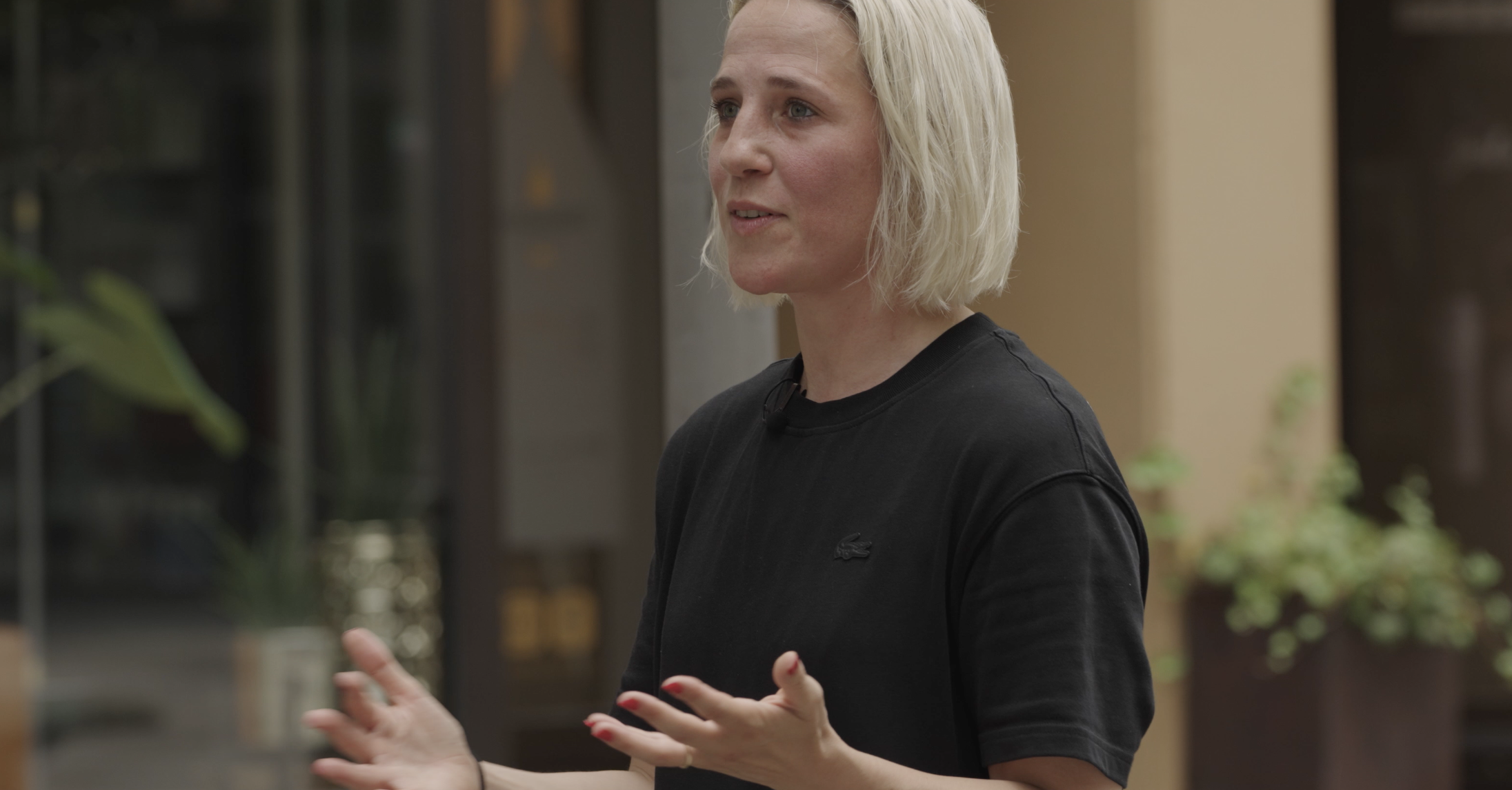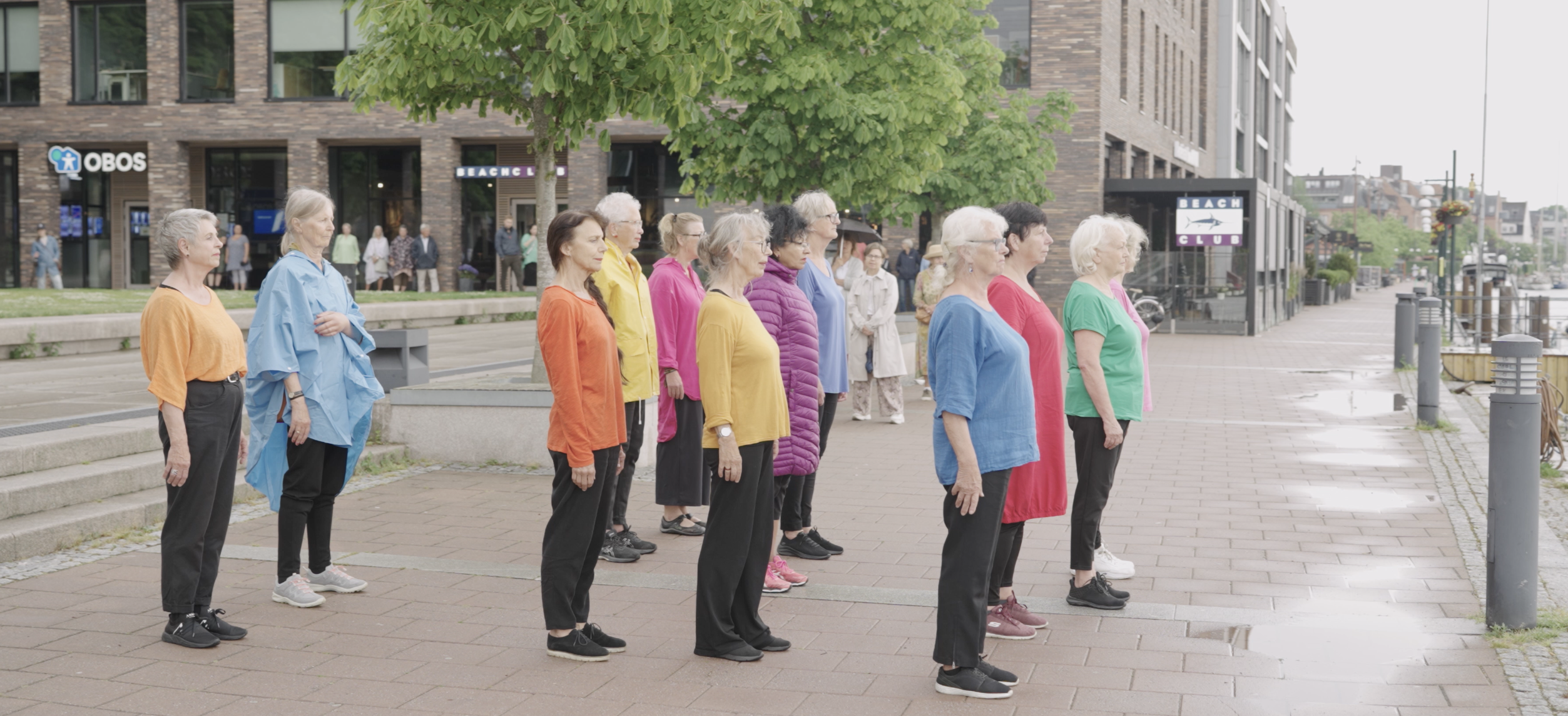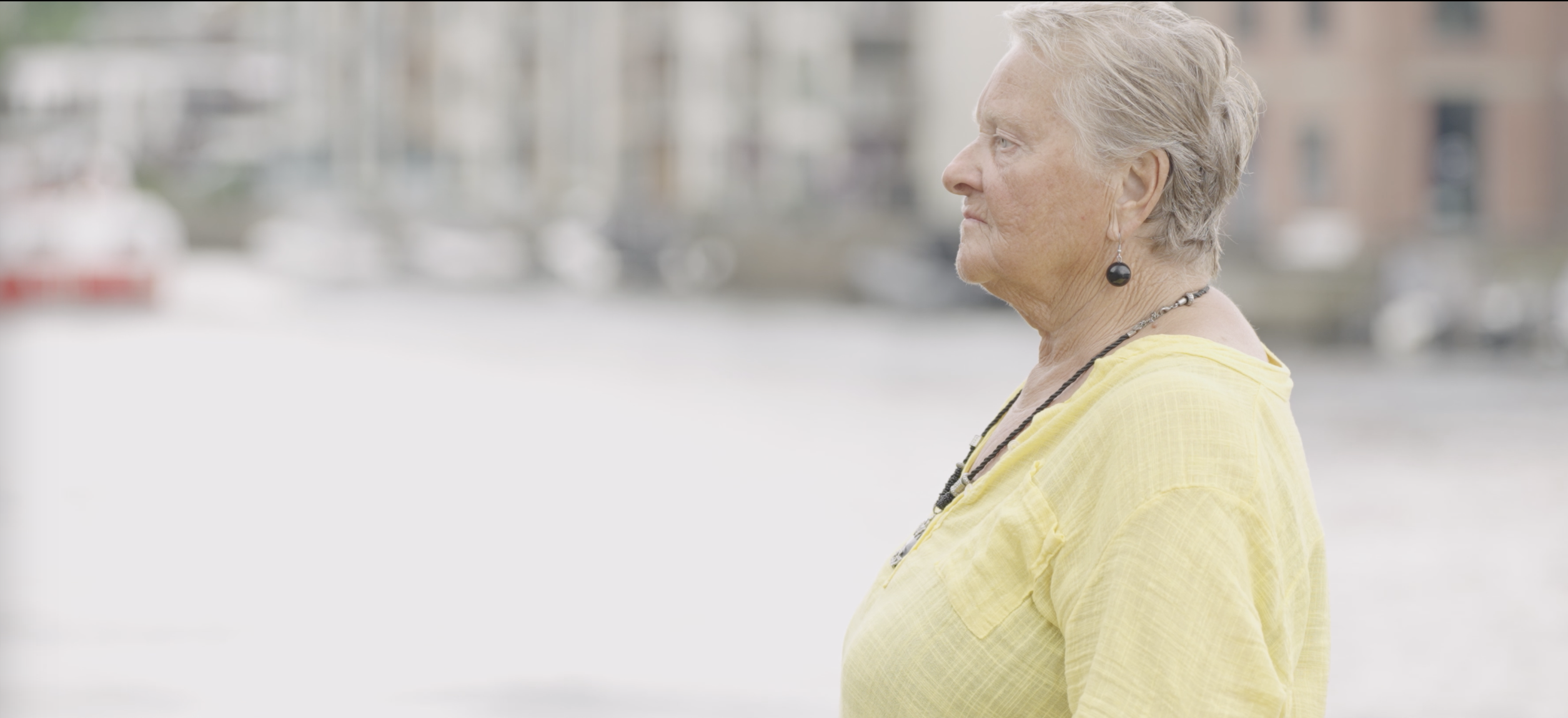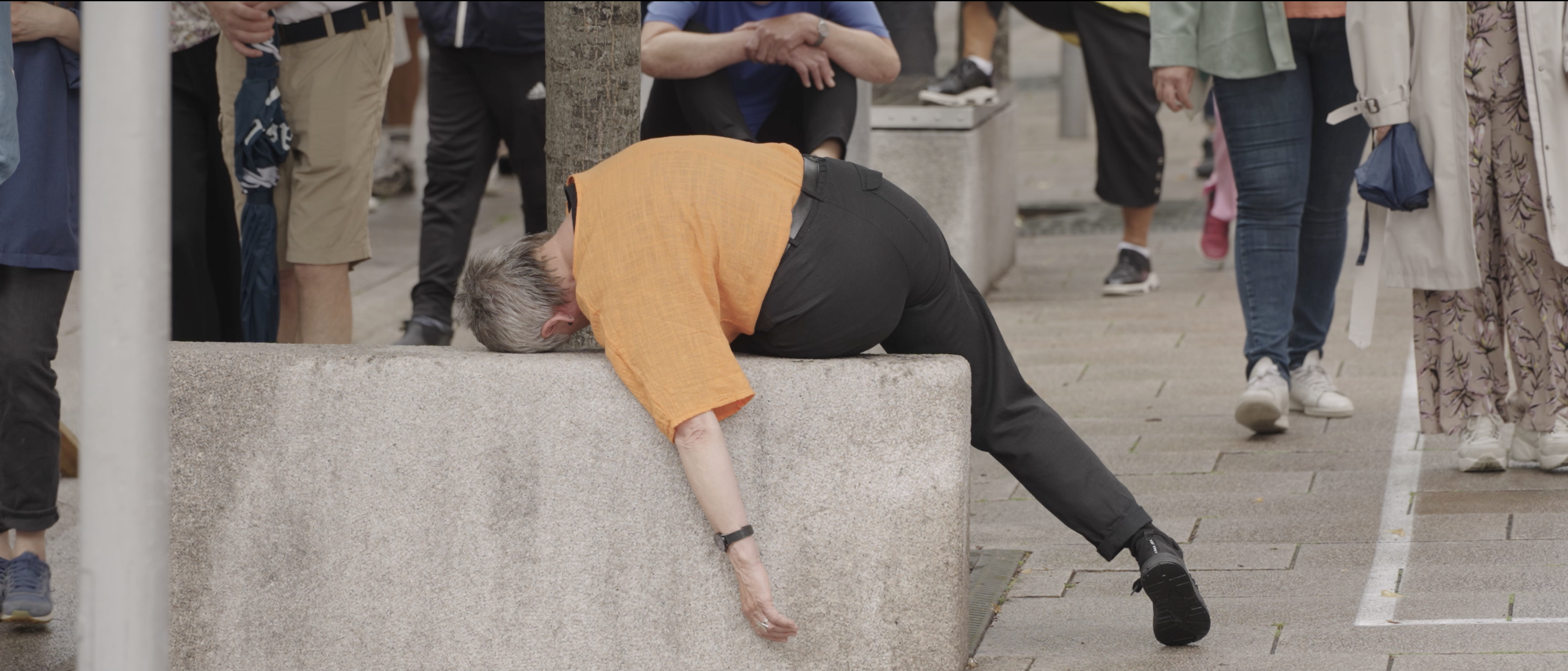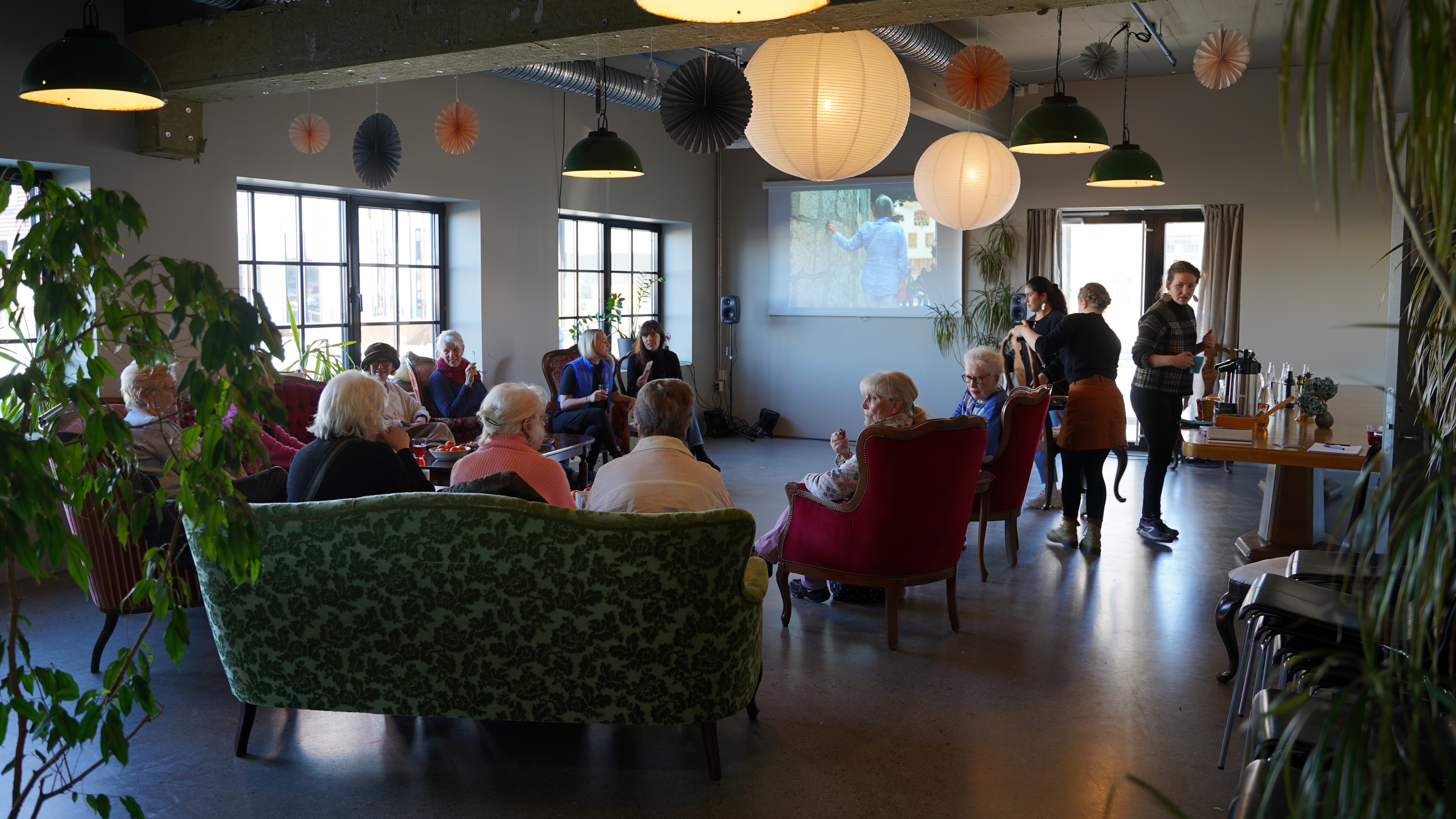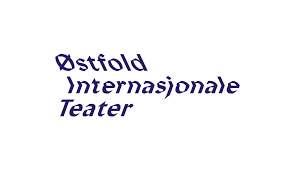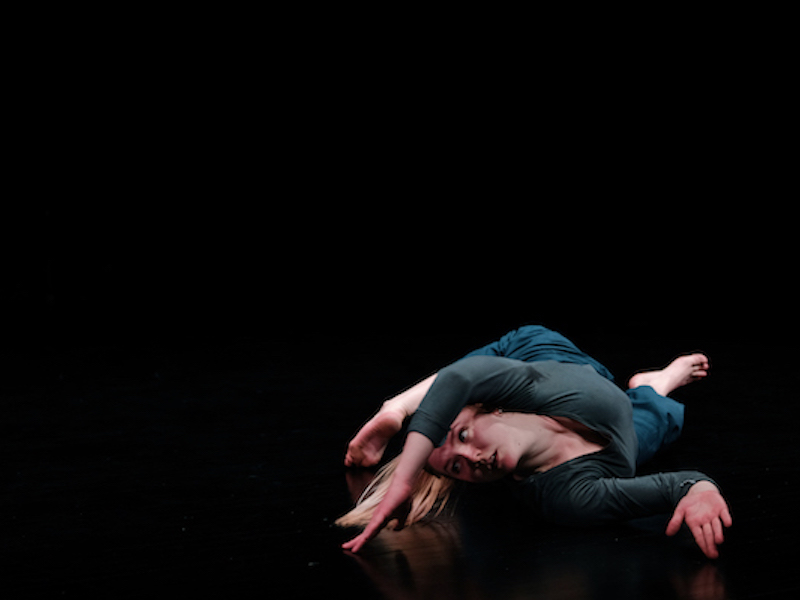 artists
artists
Silver Boom: A Case Study in Involving Inhabitants in Art in Public Space
with Anna Anderegg, Live Skullerud, and James Moore
10/10/2024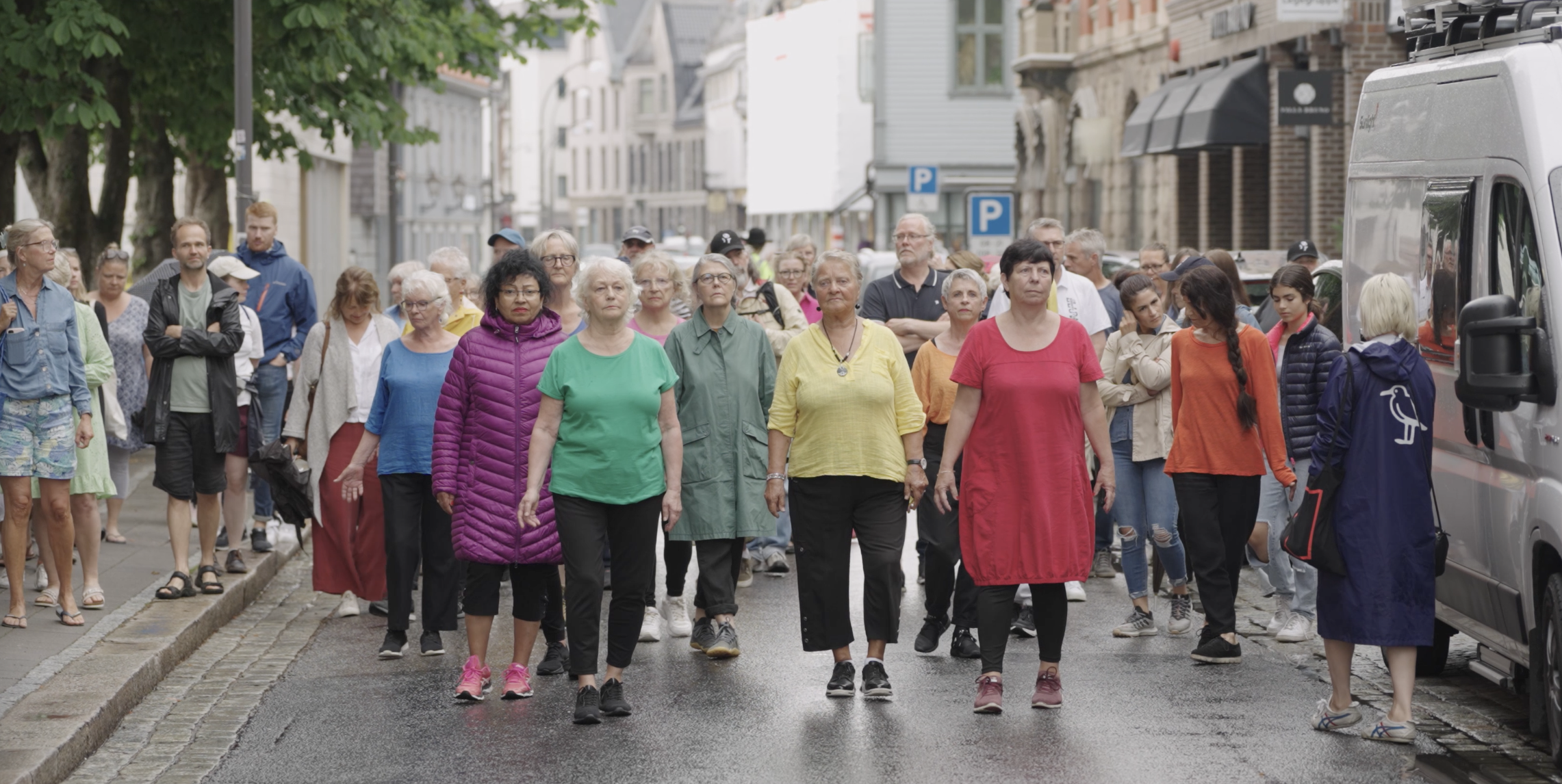
A podcast conversation between IN SITU artists Anna Anderegg, Live Skullerud and James Moore, reflecting upon Andereggs work Silver Boom, a chorographic intervention in public space with local women aged 60+ that was implemented in the Norwegian towns of Fredrikstad and Moss in June and August of 2022.
A conversation between IN SITU artists Anna Anderegg and Live Skullerud, and Østfold Internasjonale Teater (ØIT) curator-producer James Moore. The conversation took place over zoom in March 2024 and was edited by Jonas Bjerketvedt. The conversation reflected upon Andereggs work Silver Boom, a chorographic intervention in public space with local women aged 60+ that was implemented in the Norwegian towns of Fredrikstad and Moss in June and August of 2022. Live Skullerud was a local coordinator engaged by ØIT to assist Anderegg, and subsequently participated in an IN SITU Hothouse in Pristina, Kosovo in April 2023. The conversation focuses on the recruitmetn and engagement of local, amateur performers, the methodology of the work, and the inspiration that Skullerud’s participation has been for her own artistic practice.
James Moore, ØIT Welcome to this podcast about the work Silver Boom by the Swiss artist Anna Anderegg. My name is James Moore, I'm the curator producer for Østfold Internasjonale Teater, we are based in Fredrickstad in the southeast of Norway, but we also work in the towns of Moss and several others and are the Norwegian member of IN SITU. And I have with me today two guests who worked with us when we realized this work in 2022. Anna Anderegg, maybe you can introduce yourself.
Anna Anderegg My name is Anna Anderegg, I am a choreographer and artistic director for the work Silver Boom. I have a performance based practice primarily in outdoor spaces or contemporary art spaces, so I never really worked in theaters or stages. And I am based between Berlin and Bern in Switzerland, and I run a performance company.
Live Skullerud Hi, my name is Live Skullerud. I'm a dancer, performer, choreographer and producer. Working both for other companies and institutions and also on my own projects. And I am based between Fredrickstad, which is my hometown and also the hometown of Østfold Internasjonale Teater and Oslo.
James Moore, ØIT Silver Boom, which is a work conceived and created by Anna results in choreographic interventions in public space, yet the work is much more than that. And perhaps Anna can introduce or explain what the work is in terms of the motivation, the concept, the form.
Anna Anderegg So Silver Boom is a performance project that we started in 2021. It's a work that questions the visibility of experienced women in our society, and it's a performative project that we do in cities with local citizens. And in particularly, we do it with women, people identifying as women 60 and the Boss. So it's a two weeks project where we take a group of people that usually have never met before and we take them into on to this adventure. And then in the end, we create this public performances. The work is also documented, there is a film element to the work that is exhibited in different forms depending on which works best with the structure that hosts. Sometimes it's public urban movie screenings, sometimes it's more showing in the installation. And there is this film element to the performance. I think that's a short introduction of the work.
James Moore, ØIT Well, I guess it was 2021 when Anna contacted me and said she had an idea for a new work she was developing. Explained what it was and I was really touched by the intentions of it. So the idea of the you say "invisibility" of women, of a certain experience in society and how they can claim their rightful place in the public realm. And I was thinking maybe you could say a little bit more about the method you work through stages with the participants.
Anna Anderegg I mean, for me, it's really also about an exchange, like a meaningful exchange that is not created or designed, like a usual rehearsal for dancers. It's really created in a way that it would you would do this workshop and receive a lot of practices that would feel comforting for the body. And we work with exercises, breathing exercises, of course, this work really works with a large range of age. So for instance, we have people between 60 and 87 or even more experienced, so of course they come also with a large range of physical possibilities. And we try to really accommodate different kind of warm up possibilities. So first of all, create this kind of really nurturing space that would be something that is in general already pleasant to do, and then and the second part of the work is, of course, then the preparation for the performance, thinking about this choreography in a very didactic way to really start at a very simple stage and then build on and really bring them to a place where they go in public space, feel comfortable, feel safe, and have the joy of trying out something that is yet unusual to be seen in public space.
James Moore, ØIT One of the requirements for us is the curating and producing agent in this was provide somebody who could assist you, so that was when we took contact with Live. And so one aspect was to assist on with the implementation of activities. But we also needed help to recruit the participants because how do you find women? And also in Norway, I think Scandinavians, it's a very reserved culture, so trying to find people who are willing to come and take a chance on meeting an international artist and doing something radically different. So Live, one thing is, what did you experience in the recruiting process? What did you do and what did you discover?
Live Skullerud I think the most kind of effective recruiting that I did was to actually seek out groups of people that are likely to have kind of our target group in them. So local knitting groups, kind of senior activity groups or volunteer work groups. So I got in contact and biked around the city to go and visit these groups and and present the project and invite people to come and hear more about it, which in itself was a very rewarding, like surprisingly rewarding experience because it made me realize how kind of secluded my own bubble of people are. Like my bubble of community that I engage with on every day level is quite one sided or narrow in some ways in that there is a certain age of people, there is a certain demographic of people that we interact with that I feel that I interact with and I feel like this process opened up That and in that way also echoed the importance of this project, because I think it's one thing to look at who is visible in the public space, but also visibility; how does that intersect with how we interact as different groups and societies?
James Moore, ØIT Is there something else that you think is missing from that, too, that you're curious about, since you also really didn't participate in that aspect of our work here? But of course, an important part was once we had the initial recruitment, some through direct recruiting, some through social media, some through old fashioned advertisements in newspapers, we then invited the women to come and meet us at the theater. Or when we were in Møss at House of Foundation and an opportunity to explain a little bit of more about what they would actually do, that they could meet Anna and have a sense of who it is that they would be engaging with. Because it was still, I mean, it was also important that some people could choose it out or say, this isn't for me, and then you're left with a random coincidental group of women who then take the dare and say, okay, let's find out what this can be for me and for us.
Anna Anderegg Then for me in this project, this has really been the most challenging part, is like, how do we find this people that is really committed, how what words do we use to explain the project when we write it? Like, do we use choreography or do we speak about movement? Because one could maybe choreography sense the way people that are that have never danced before and that they're afraid. They need to learn a lot of steps by heart, which this work is not all about it at all. It's not at all about. And on the same hand, it could attract people that want to have this kind of dance class and dance routine at that can be totally disappointed to have to do a kind of group work. So, yeah, I think you touch on this most delicate and maybe most complicated part of the work. Working in ØIT has been very privileged in this sense because I was not at all involved in this process. I had the chance of meeting the women once already, women that were interested were coming actually to the theater. But in other instances, like here in Malta, I had actually to go and try to find people in a different country and which is kind of a very complicated thing to do.
James Moore, ØIT And for us, it's one thing is to want to do the work, but that's, I would say, probably one of the biggest risks because without having without being able to inspire or seduce enough inhabitants to do it, then it kind of falls. So. So you say one of the bigger risks is not maybe what we do in public space, which still carries a sense of risk and a sense of vulnerability to it. But from the organizing standpoint, from the curating standpoint, it's even, okay, how do we find people who are willing?
Live Skullerud Yeah. I think one of the other things that stands out about the recruiting part is also the surprise of a kind of eagerness and enthusiasm that we were met with the fact that our information meetings were actually full and that we had a lot of sign ups quite immediately. And it was really lovely to see the kind of curiosity that existed in the room of the information meeting.
James Moore, ØIT And another at least aspect in terms of your role coming in, you are I mean, the principal function was to assist with a lot of practical needs with organizing, also with language, because a lot of our experienced women weren't so comfortable or fluid with English so that it was really valuable. Some were very comfortable, some really needed the support to be able to speak or hear enough of the details in Norwegian. But during the course of the project, your role evolved. And if I understood correctly from Anna that you started delegating a lot of other activities, a different function, so that a lot of the the leadership work in the process became shared. So I don't know what is it that happened for you in this that actually triggered a desire to test out something different with somebody who you hadn't worked with before, who you in a way, started working with by chance.
Anna Anderegg So because of the language at one point I was not saying it and Live translating it and would start to take it over and just get through parts of the work herself. And so having this part of the work already shared, it would just be so much more easy to to kind of weigh all this information on two shoulders. And it's something that I started to do afterwards all the time to really always have somebody with you, and that takes over a specific part of the work. This work doesn't need to be hierarchical. I don't know how to explain it better. This work is all about several people together, assisting each other to do something out of the ordinary, and this has been a super beautiful encounter with you Live and has also opened up, I think, a very good direction for the project.
James Moore, ØIT And Live, some time after we were done with Silver Boom, you came to me and had wanted to present a concept for a work of your own That was in many ways building on a previous work that you had done, or somehow further elaborating some methods you were working with and that you also wanted to work with amateurs. It was a little bit different. But then one of the things that you said to me was that you also were inspired by some of the methods and some of the ways Anna was working. And I was curious if you could explain a little bit both what is the concept you're working with, but also what was it that you were able to draw or somehow incorporate into your own methodology that benefited your artistic work?
Live Skullerud The project that is at the moment being called the Proximity Project is something that grew out of very specific physical material. This slow motion sculptural embrace, that I kind of happened upon in a research for a different project. And the visuality of it really stuck with me. So it was something that I wanted to bring further. And we, as a duet, performed it in public spaces, and that's something that was kind of a bubbling in the back of my mind for a long time, I think it came from wanting to have the impact of like a lot of people at first, and then the idea of kind of using a community cast or people from local communities, not necessarily professionally trained performers came both from kind of a practical standpoint, but also the growing desire to have a representation of bodies in public space that are not just the kind of trained body of a dancer, but a multitude of bodies and people. And it was something that has been brewing in my mind, and that's after working with the Silver Boom and theater here. And one of the first things it really offered me was to get to see and join an experience. How this work could look like to kind of see both from the institutional side and from the artistic and choreographic side. What could this look like?
James Moore, ØIT For me, I see this project and one of its essences is that it's a project of empowerment. The objectified notion of this group of women really going and claiming space has a very touching quality, but that's one component and that's kind of a manifestation when they go out into public. The whole process that again, is this building trust. But Anna you talked about the exercises and the preparations, but I know that there's an awful lot of very personal sharing that occurs between the women about their experiences, about their questions. And a lot of it becomes very deeply personal and becomes very vulnerable. But that also is a part of this process in a way, in a way of claiming the desire to be assertive in a way that is suitable to the individual. And it was really special to be able to observe in a way, in the course of a relatively short amount of time how these women went from a state of caution, a state of being careful about one another, since most of them didn't know who one another was coming into it and then seeing a kind of a cohesion form. And so it was very moving, and afterwards, you could say several months after we've heard, I've heard at least both directly and indirectly from several of the women that this was a transformative project or a transformative experience in their lives, that it really changed, and they've had a whole other new course of life and activity as a result of this.
Anna Anderegg Well, for me as an artist, the process is the most exciting part of this work; it's like to activate some kind of inner changes in people that may be this experimental part of being everywhere and trying out things can go a little bit in the back of our minds of all of us being an adult. And I think as an artist, this has been almost the most exciting thing, sometimes I think we do this performance as an excuse to actually go in there, and have this time, otherwise people would never come on this journey if it wasn't for a specific goal. And even though I love this performance and the outcome in the end and I think it's definitely worth it and and and totally valuable to see, I think the process is much more than just this rehearse that lead up to this performance. Yes, It's very touching to hear about the impact that it made, and I would love to take all the credit for it, but in the end, it's like we are just doing a workshop together. So it's like we're just facilitating for them to go and change their lives.
James Moore, ØIT Well, I'm not convinced it's so easy because, I mean, you're also asking them to share some very personal things, but you don't do that the first few days. What they're willing to share with what began as a group of strangers is something that also again, it's creating a safe space and creating something that is still through as a ritualized series of steps in a way. So I think you it's not just facilitating what happens later.
Anna Anderegg Sure. And what are the the what is the environment that is given to them? But I think in the end, you know, it's not what I mean with simple that it's it's sitting together and spending time together and we work with the breath and the movements. It's if I mean simple in terms of what you would actually need to have. And that's what I mean about simple. There is still I think, some kind of a taboo about I think it's somehow a common experience for a woman to start to feel invisible in certain situations and to reflect upon. I don't know what does it mean this last stage of life, what kind of role and play she has in society. But it's as if somehow it is affecting all of us and on the same time it's very taboo, and it's not very common to to take the time to speak about it, even though it's very common like in every place that I did Silver Boom until now, this was definitely a topic and it was sometimes for some women it felt like nice to not be seen and have this constant attention because prior to that, they felt so much objectified or it was very much just focused on that, on being attractive or it was like one of the power they felt they had and was available to them as a woman. And for others, it feels like a loss. And of course, then there is menopause and all kinds of topics that come out and that I think that it's not so often that we speak about even even it's a very common topic.
James Moore, ØIT With the idea of other artists who might be curious to work in this way or, you know, say, institutions that program art that would be inclined to have this kind of a methodological approach to involving inhabitants and maybe the inhabitants that often aren't the ones in focus. Is there something either of you would say based on your experiences so far that would maybe be most important to consider or things to prioritize that might not be so obvious.
Live Skullerud Especially in regards to having the experience of doing the recruiting. I feel like going out and meeting people and spending like the resources and energy to put that work in, I felt was really worth it and valuable. And also because it creates a ripple effect even for the people who don't end up being in the project.
James Moore, ØIT Yeah. For our standpoint, that was critical that to actually do an outreach, not just try and advertise or hope that social media or our newsletters were going to do it. But it's such a human endeavor and you need that humanizing introduction and invitation, I think, to lower the threshold. So some some will come on their own anyhow, but to actually get enough participants and to get the diversity of participants. I think that human outreach is vital.
Anna Anderegg And maybe to add on because I couldn't agree more with everything you both said is for me, I have learned, especially after coming to Norway and being so generously welcomed and really, I can salute you more and a generous way of accommodating people. For me, I've really learned how important it is to just ask for much more for the participants. I mean that in terms of snacks and facilitation, they might need additional people to take care of the people who can carry their stuff. Like just to be a little bit a bigger team and in order to really be able to accommodate someone that maybe needs assistance to walk up and down the stairs or we are a team of two, we just cannot take care of everyone and allow everybody to cater to everybody's needs as they all as we would all love to. And so, yeah, for me, I underestimated how much this part is actually adding on to the value of the outcome.
